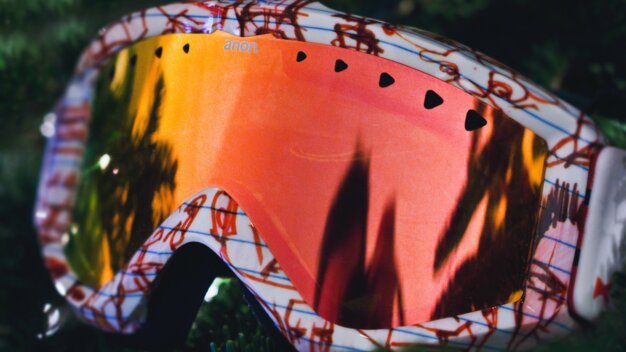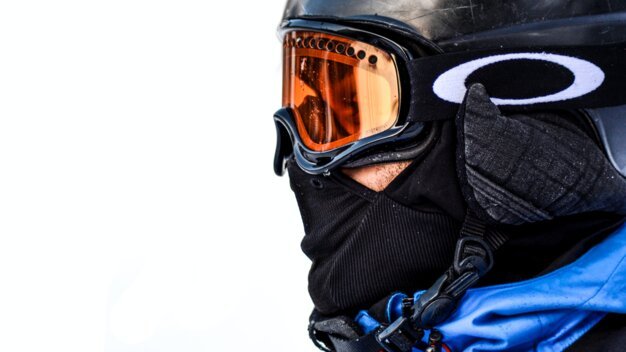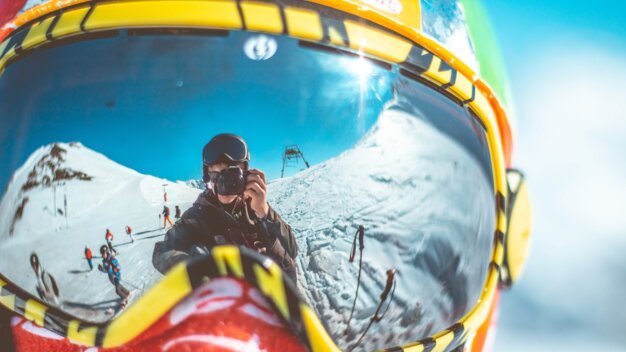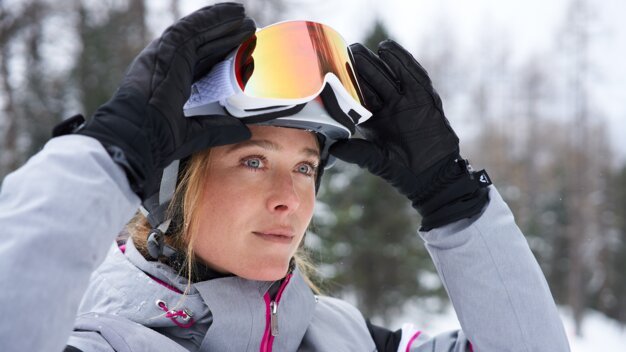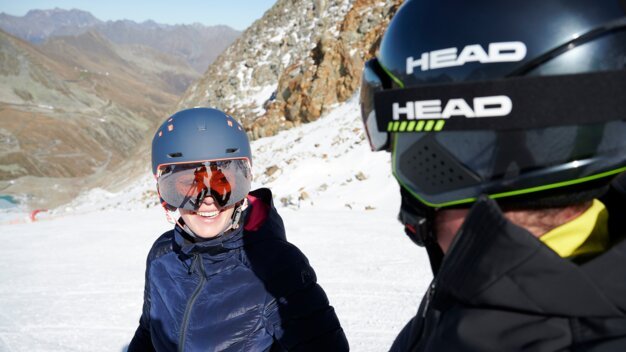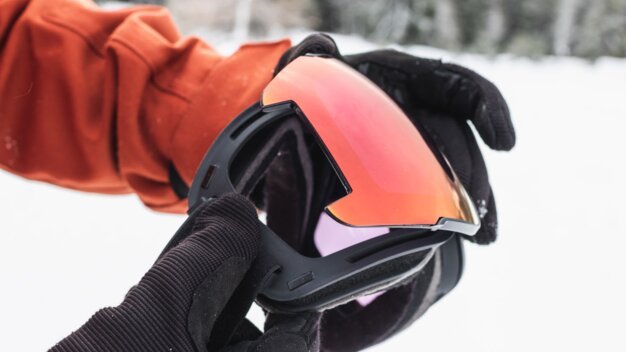
A day on the slopes without good ski goggles? Unthinkable! After all, weather conditions can change rapidly in the mountains. Thanks to UV protection, tint, adjustable straps and other features, ski goggles keep your eyes safe from snowfall, wind and sunshine. With perfectly fitting goggles, you’re ready to brave the elements.
What you should know about fit, tint and straps
Read on to find out what you should keep in mind when choosing ski goggles – from lenses to frames and straps.
Lenses: what to keep in mind
The lenses are one of the most important aspects when buying new snow goggles. Their size, shape, tint, translucency, UV protection and ventilation determine how well you see in different weather conditions.
Shape and size
Ski goggles either come with spherical or cylindrical lenses. They differ in the following aspects:
- Spherical lenses: curve both horizontally and vertically, reduce glare, relieve visual fatigue, offer great all-round vision, fog up less due to good air circulation
- Cylindrical lenses: curve horizontally while remaining vertically flat, less peripheral vision, cheaper
General rule of thumb: The bigger the goggles, the larger your field of vision.
Ventilation against fogging
Fogged-up goggles are a real nuisance during any snow adventure. That’s why many ski goggles come with sophisticated ventilation systems. Foam padding and vents at the upper edge of the frame ensure good air circulation. Some goggles also come with a special anti-fog coating. In addition, double glazing helps to reduce steaming up.
Our tip: Your goggles are also more prone to fogging if they are not compatible with your helmet. That’s why it’s a good idea to bring your helmet when buying new goggles. Keep in mind that the gap between the upper edge of your goggles and your helmet (also called goggle gap) should not be greater than five millimetres. That’s why it often makes sense to choose a helmet and goggles from the same manufacturer.
Ski goggles and UV protection
Good ski goggles should provide 100 per cent UV protection. This is vital to keep your eyes protected in the mountains. Mirrored goggles reflect the sunlight and protect your eyes even better against light reflected off bright snow. Good-quality ski goggles usually reflect UVA, UVB and UVC rays as well as blue light.
Tint
Tinted lenses can increase contrast and improve vision. Which tints are suitable for which weather conditions? Find out below …
- dark, black, brown, grey: sunny
- blue, purple, red, pink: cloudy
- yellow, orange, clear: foggy and snowy
Clever technology: Self-tinting lenses or transition lenses automatically adapt to changing light conditions.
Translucency
Another important aspect when choosing ski goggles is their translucency. Based on their VLT rating (VLT = visible light transmission), you can see what kind of weather they are most suitable for:
- category 0: 80 to 100 % – for grey and cloudy weather
- category 1: 43 to 80 % – for changeable weather
- category 2: 18 to 43 % – for partly sunny, partly cloudy weather (ideal for all-rounders)
- category 3: 8 to 18 % – for mostly sunny weather
- category 4: 3 to 8 % – for very sunny days
Interchangeable lenses
Changing the lens of your ski goggles? Yes, please! Interchangeable magnetic or click lenses allow you to adapt your goggles to the current weather conditions. What kind of weather do you primarily ride in? Think about it in advance and choose your lens accordingly!
Fit: frame and straps
The perfect fit of your ski googles mainly comes down to the strap. Adjust the elastic strap so that the googles fit your head properly.
Another important aspect of your goggles’ wearing comfort is the frame. It is usually made from flexible, breakage-proof plastic to provide maximum freedom of movement. Foam padding makes sure that the frame sits comfortably on your face and relieves pressure.
The most common fits:
- Small fit: usually for children and youths, avoids the gap between helmet and goggles
- Medium fit: all-round fit, compatible with most helmets
- Large or oversized fit: large field of vision, ideal for freeriders and freestylers
- Over the glass fit (OTG): the perfect fit for riders who wear their goggles over glasses
- Ladies fit: great fit for narrow faces
- Asian fit: perfect for riders with small noses and high cheekbones
INTERSPORT Rent tip
Be careful when cleaning your ski googles! Remove dirt from the lens with a bit of water. If the googles steam up, simply let them dry for a few seconds. If you’re in a hurry, you can also use a special optics wipe to dry the lens.
Please note: Detergents or rough tissues can scratch the lens!
